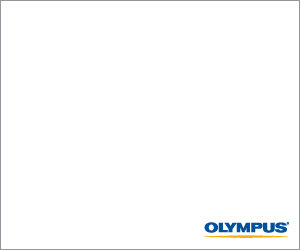|

Digital Camera Review by: Katrina Putker
If you’ve been saving up to purchase a new camera that will take you gently from the compact realm in to the more advanced world of digital SLR, or you’re wanting to upgrade your current entry-level DSLR to something more capable and current, Nikon’s D5000 may well be the camera you are looking for.
This latest member of Nikon’s DX-format DSLR units slips in between the D60 and D90 models despite the name confusingly suggesting otherwise.
It seems to borrow from and add to the better features from the D60 and D90, resulting in a smaller-sized, fairly advanced DSLR that while marketed mainly toward the entry-level DSLR user, offers a well-rounded overall package that would suit anyone wanting to get serious about their photography and for that matter, their video.
The D5000’s flip LCD screen is a brilliant feature that significantly extends the bounds of photographing above the head, down at the feet, at hip height, behind you, around corners etc.
It pulls away from and 180 degrees below the D5000 body where it then rotates a further 270 degrees and users can choose to utilise its live view or to ‘close’ the screen in towards the body for protection and use the viewfinder instead.
The D5000 boasts a 12.3-megapixel CMOS sensor capable of producing high quality images with the help of the fast 11-point autofocus system, alongside high definition video, even if at a downscaled 720 lines of vertical resolution as opposed to the full HD 1020p.
Unfortunately, there isn’t a dedicated video record button available on the D5000 meaning users must firstly focus, as per shooting stills, then press the OK button to begin recording footage and only if they have switched to live view mode to begin with.
Not even the extensive mode dial offers a movie mode option for quick access so overall, physically switching to and shooting video is not as straightforward as it ought to be.
While the process does work well enough once it actually gets going, it would have been a bonus should a dedicated record button been accounted for. Maybe in future models, who knows?
Having said that, once this routine is learnt, it’s definitely an added bonus having video recording capabilities on your DSLR and one that is likely to entice users who enjoy having the option to switch between stills and motion recording all within a single unit.
The D5000’s autofocus function can be somewhat cumbersome when in live view mode, taking anywhere between three and five seconds to lock on. In contrast, when shooting via the real-time viewfinder, auto focus performs at a satisfactory speed.
The mostly polycarbonate body is designed in a very similar fashion to the rest of the Nikon DSLR range with the shutter, power switch, exposure compensation and information buttons readily available for the right hand index finger to control.
A single command wheel, auto exposure and focus lock button, dedicated live view button, multi-selector directional pad, and the OK button are all placed within reach of the right hand thumb.
The 13-option mode dial rests neatly in position on the body’s top for easy thumb-and-finger operation by which it clicks cleanly into each position with every change.
On the whole, the D5000 denies its chunky looks and feels quite comfortable to shoot with and control. It rests securely and naturally in hand and is quite lightweight (at approximately 560g) considering the powerful punch it packs as a higher-end entry-level DSLR.
The extensive scene modes available include: night/landscape, party/indoor, beach/snow, sunset, dusk/dawn, portrait, candlelight, blossom, autumn colours, silhouette, high key, and low key.
Intuitively, Nikon have included in-camera sample images that demonstrate the how the scene mode (and various other shooting options) selected will affect photographs to help users visualise the likely resulting image.
This will prove of great assistance to those making the leap to DSLR from compact cameras that are still learning how the more advanced technology at their fingertips can truly enhance their images.
Overall, D5000 photographs appear clear and crisp with only a slight decrease in sharpness at full zoom and colours seem to reproduce well across the board and are especially vibrant outdoors. Images do tend to come out quite contrasty but with well-saturated colours and good skin tones.
Occasionally the D5000 presents images with deep, dense blacks in the lowlights and while this undoubtedly helps contribute to the production of punchier images overall, it does occasionally mean a minor loss of detail within shadowed areas.
Users have the options of shooting in various qualities of JPEG or RAW, which allows for greater control during processing. The option to shoot both RAW and JPEG files simultaneously is available, which may be best for those initially unfamiliar with RAW processing who would benefit from seeing the difference and learning how to work with both file formats to obtain optimum results.
The main difference between JPEG and RAW file formats is simply that JPEG files are automatically compressed and partially processed in camera, where a RAW file remains uncompressed and is therefore considered to be a digital negative from which the user, as opposed to the camera in JPEG mode, chooses how to best process the image in post-production.
The pop-up flash works well across a variety of situations maintaining a fairly balanced exposure overall. It proves delightfully gentle on skin tones, which can often blow out or reproduce inaccurately when shot with flash by lesser cameras.
Occasionally images shot with flash indoors in lower light conditions can be slightly underexposed but this can be easily rectified with some minor adjustments in processing, especially when utilising RAW file capture.
In these same low light conditions, noise is kept mostly under control even at high ISOs 800 and 1600 where many other cameras simply cannot cope and produce ultra-grainy almost unusable images.
The spring-loaded side compartment for the SD memory card opens easily and by hosting this compartment on the side of the body, the D5000 allows for quick and easy card access especially when mounted on a tripod.
The internal menu system proves easy to navigate, a process assisted further by the use of colour coded custom settings and users will find the extensive instruction manual equally easy to navigate despite its slightly excessive A5 size that reduces portability somewhat.
Considering the D5000 is best suited for those first entering the DSLR market it is a slight oversight that the manual, which is likely to be referred to often, isn’t sized appropriately to slip into a handbag or backpack easily and discreetly however, if this is one of the larger downfalls of the D5000 it is fair to say the camera is doing quite well for itself!
Nikon affectionately describe the D5000 as a having ‘big camera features with small camera ease’ and that is a fairly accurate claim.
Aside from having two significant drawcards in high definition movie recording and an impressively agile vari-angle LCD screen, this unit performs solidly across the board and offers users a very comprehensive high-end entry-level DSLR package.
| Appearance rating |
4 stars |
| Functionality rating |
4 stars |
Image quality
|
4 stars |
Lens quality
|
4 stars |
| View finder / LCD screen |
4.5 stars |
| Value for money |
4 stars |
| RRP (AUD) |
$1,499 |
 |
|
| Effective Pixels |
12.3 Million mega pixels |
Image Sensor
|
CMOS sensor, 23.6 x 15.8 mm; total pixels: 12.9 million; Nikon DX-format |
| Image Sizes |
3 Sizes |
| Resolution Settings |
4,288 x 2,848 [L], 3,216 x 2,136 [M], 2,144 x 1,424 [S] |
| Manual Focus |
Yes |
| Auto Focus |
Yes |
| Aperture Priority |
Yes |
| Shutter Priority |
Yes |
| Shutter Speeds |
30s - 1/4000s |
Exposure Metering System
|
3D Color Matrix Metering II, Center-Weighted and Spot Metering |
| Exposure Modes |
Auto modes (auto, auto [flash off]), Advanced Scene Modes (Portrait, Landscape, Child, Sports, Close up, Night portrait, Night landscape, Party/indoor, Beach/snow, Sunset, Dusk/dawn, Pet portrait, Candlelight, Blossom, Autumn colors, Food, Silhouette, High key, and Low key), programmed auto with flexible program (P), shutter-priority auto (S), aperture-priority auto (A), manual (M) |
| ISO |
ISO 200 to 3200; can be set to ISO 100 and ISO 6400 equivalents |
| LCD Monitor |
Yes |
| LCD Size |
2.7-in. 230k-dot Vari-angle monitor swings down approximately 90° and rotates 180° |
| Viewfinder |
Yes |
| Hot Shoe |
Yes |
| White Balance |
Sun, Shade, Fluorescent, Incandescent, Flash, Preset, Auto
Auto: (TTL white balance with 420-pixel RGB sensor) Seven manual modes with fine-tuning; Sun Shade Fluorescent Incandescent Flash Preset Fine Tune by Kelvin Color temperature setting |
| Self Timer |
2, 5, 10, 20s |
| HD Movie Option |
Yes |
| Movie Sizes |
HD 1280 x 720/24 fps VGA 640 x 424/24 fps QVGA 320 x 216/24 fps |
| Video Out |
Yes |
| Storage Type |
SD / SDHC |
| Still Image Format/s |
JPEG: JPEG-baseline-compliant; can be selected from Size priority and Optimal Quality, Compressed 12-bit NEF (RAW)
|
| Movie Image Format/s |
AVI
|
| Audio Format/s |
|
| Connectivity |
Hi-speed USB, NTSC, HDMI |
| Power Source |
AC Adapter EH-5a |
| Battery Options |
Rechargeable Li-ion Battery EN-EL9a |
Battery Life
|
Approx 510 shots |
| Dimensions |
(W) 127 x (H) 104 x (D) 80mm |
| Weight |
560g |
|










